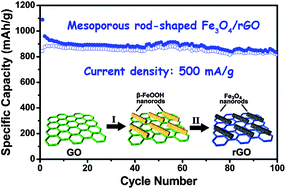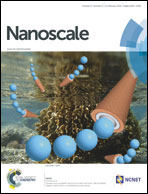Low temperature plasma synthesis of mesoporous Fe3O4 nanorods grafted on reduced graphene oxide for high performance lithium storage†
Abstract
Transition metal oxide coupling with carbon is an effective method for improving electrical conductivity of battery electrodes and avoiding the degradation of their lithium storage capability due to large volume expansion/contraction and severe particle aggregation during the lithium insertion and desertion process. In our present work, we develop an effective approach to fabricate the nanocomposites of porous rod-shaped Fe3O4 anchored on reduced graphene oxide (Fe3O4/rGO) by controlling the in situ nucleation and growth of β-FeOOH onto the graphene oxide (β-FeOOH/GO) and followed by dielectric barrier discharge (DBD) hydrogen plasma treatment. Such well-designed hierarchical nanostructures are beneficial for maximum utilization of electrochemically active matter in lithium ion batteries and display superior Li uptake with high reversible capacity, good rate capability, and excellent stability, maintaining 890 mA h g−1 capacity over 100 cycles at a current density of 500 mA g−1.


 Please wait while we load your content...
Please wait while we load your content...